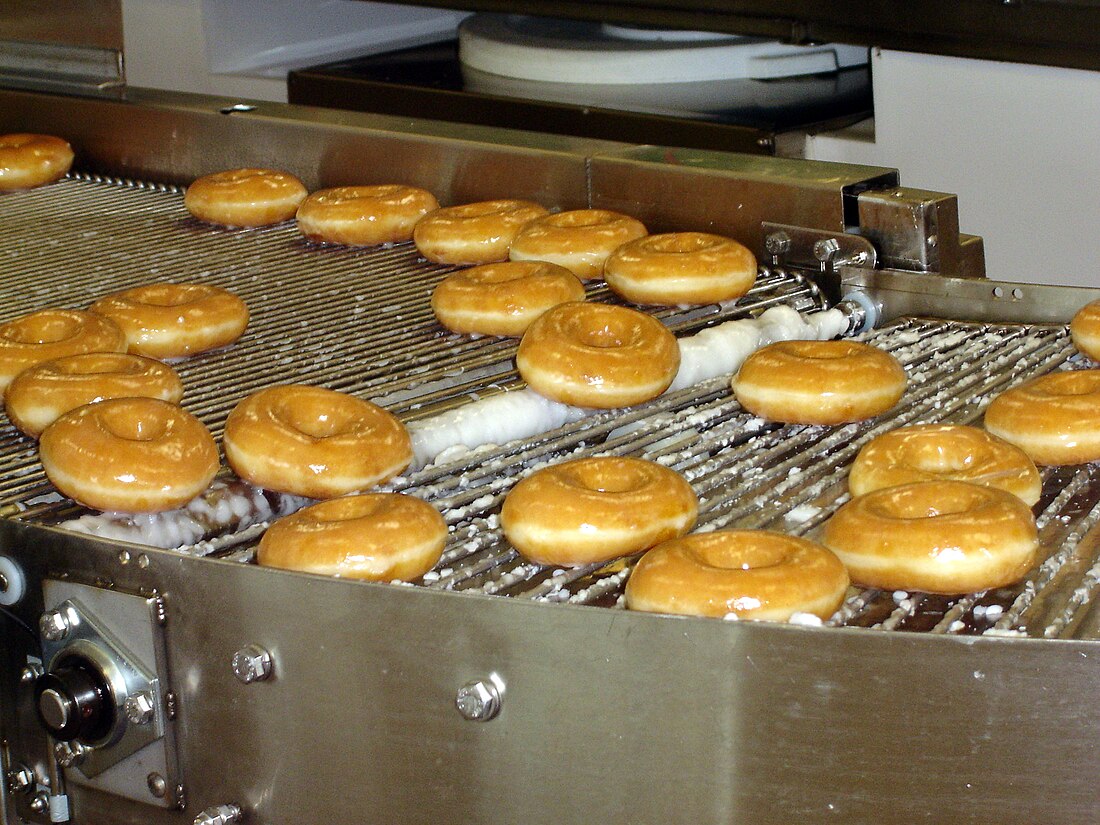Top Qs
Timeline
Chat
Perspective
Glaze (cooking)
Cooking technique From Wikipedia, the free encyclopedia
Remove ads
In cooking, a glaze is a glossy, translucent coating applied to the outer surface of a dish by dipping, dripping, or using a brush. Depending on its nature and intended effect, a glaze may be applied before or after cooking. It may be either sweet or savory (in pâtisserie, the former is known as glaçage); typical glazes include brushed egg whites, some types of icing, and jam (as in nappage), and may or may not include butter, sugar, milk,[1] oil,[2] and fruit or fruit juice.[3]

Remove ads
Examples

Doughnut glaze is made from a simple mixture of confectioner's sugar and water, which is then poured over the doughnuts. Some pastries have a coating of egg whites brushed-on. Some pastries use a "mirror glaze", which is glossy enough to create reflections,[4] and some candies and confections are coated in edible wax glazes, often during tumbling.
A savory glaze such as demi-glace can be made from reduced stock or meat glaze that is poured onto meat or vegetables. A glazed ham may have its glaze applied before baking, basted with it during, or produced after, as with a brown sugar mix being heated by a torch.
Remove ads
History
This section needs expansion. You can help by adding to it. (October 2022) |
The origin of glaze recipes can be traced to the medieval British period. A typical medieval English glaze was the 'Elizabethan' glaze made from lightly beaten egg white and sugar used predominantly on pastries of the time.[5]
See also
- General terms:
- In baking and confectionery:
- In cooking:
References
Wikiwand - on
Seamless Wikipedia browsing. On steroids.
Remove ads
